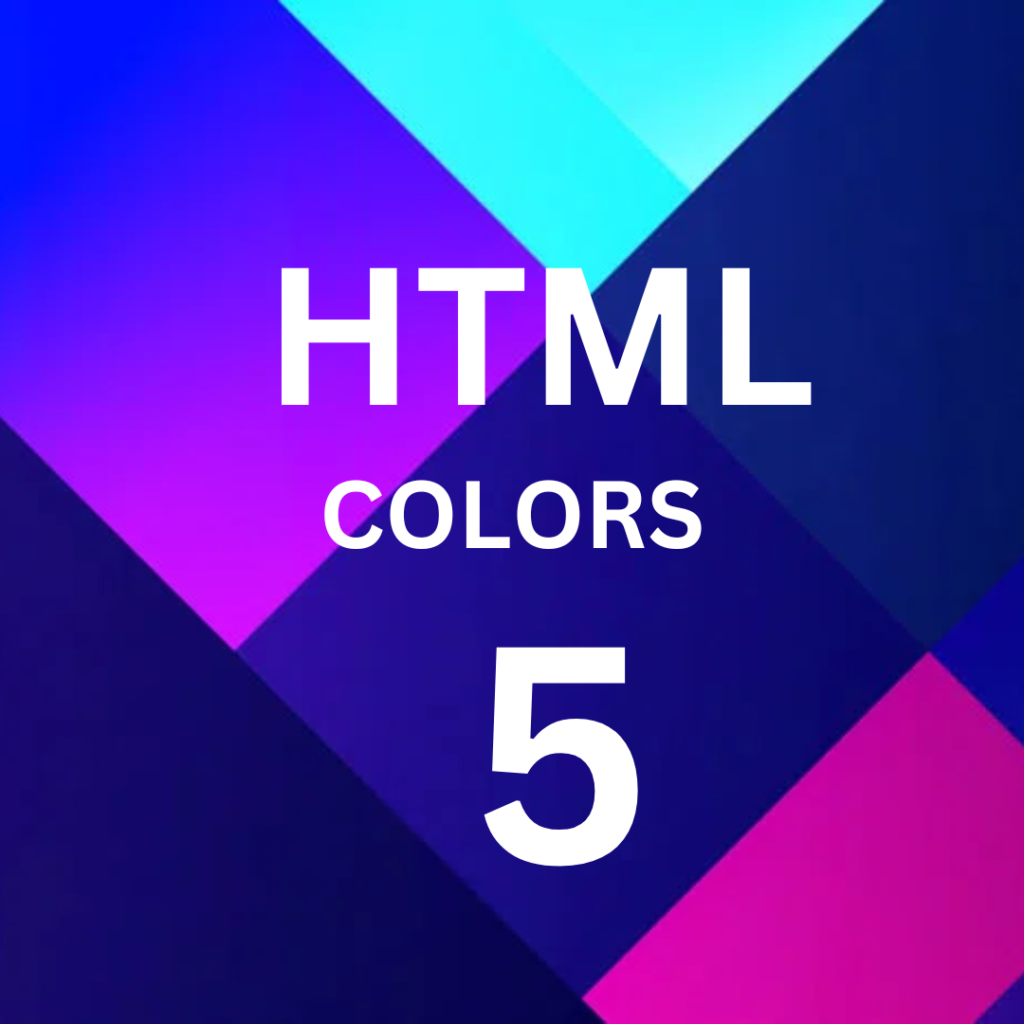HTML Colors

HTML Colors
In HTML , you can use CSS to add colors to your web pages. There are several ways to specify colors in CSS, including
1. Color Names:
CSS provides a set of 147 named colors, such as “red”, “blue”, “green”, etc. You can use these color names in your CSS code, for example:
h1 {
color: red;
}
2. Hexadecimal Values:
This is a way to represent colors using a combination of red, green, and blue values in hexadecimal notation. Each color component is represented by a two-digit hexadecimal value (00-FF), for example:
h1 {
color: #FF0000; /* red */
}
3. RGB Values:
RGB values is part of HTML colors are another way to represent colors using red, green, and blue values. Each component is represented by a number from 0-255, for example:
h1 {
color: rgb(255, 0, 0); /* red */
}
4. HSL Values:
HSL (hue, saturation, lightness) values are another way to represent colors. The hue value represents the color itself, saturation represents the intensity of the color, and lightness represents the brightness of the color. For example:
h1 {
color: hsl(0, 100%, 50%); /* red */
}
5. CSS Styles:
While the examples above use inline styles, it’s common to separate styles into a CSS file for better organization. Here’s an example using an external CSS file:
<!DOCTYPE html>
<html lang=”en”>
<head>
<meta charset=”UTF-8″>
<meta name=”viewport” content=”width=device-width, initial-scale=1.0″>
<link rel=”stylesheet” href=”styles.css”>
<title>Color Example</title>
</head>
<body>
<p>This text is green.</p>
</body>
</html>
In addition to text color, you can also use CSS to add background colors to elements, borders, and other visual elements on your web pages. It’s important to choose colors that are easy to read and provide sufficient contrast with the background to ensure accessibility for all users.
HTML Colors
The history of color in HTML is closely tied to the development of web technologies and the evolution of web standards. Here’s a brief overview of the historical aspects:
-
HTML 3.2 (1997):
- HTML 3.2 was the first HTML specification to include support for specifying colors.
- Colors were defined using 16 color names, such as “black,” “white,” “red,” etc.
- This version laid the foundation for basic color representation in HTML.
-
HTML 4.01 (1999):
- HTML 4.01 introduced additional ways to specify colors, including hexadecimal RGB values (#RRGGBB) and RGB functional notation (rgb(r, g, b)).
- The expanded color options provided more flexibility and precision in defining colors.
-
CSS (Cascading Style Sheets):
- CSS, introduced in the late 1990s, played a significant role in the evolution of color representation on the web.
- CSS allowed for the separation of style from content, enabling more sophisticated styling and theming.
- Color properties like
colorfor text,background-colorfor backgrounds, and various others were introduced.
-
Web Safe Colors:
- In the early days of the web, designers were mindful of “web-safe colors” to ensure consistent display across different monitors and browsers.
- The web-safe palette consisted of 216 colors that were considered safe for display on most systems.
-
CSS3 and Extended Color Features:
- CSS3, introduced in the 2000s and ongoing, brought about additional color features.
- RGBA (red, green, blue, alpha) and HSLA (hue, saturation, lightness, alpha) were introduced, allowing for transparency (alpha channel).
- The
currentColorkeyword was introduced, allowing an element to inherit its color from its parent.
-
Color Names and Accessibility:
- Efforts were made to improve accessibility by promoting the use of named colors for better readability and compatibility with assistive technologies.
-
CSS Custom Properties (Variables):
- CSS custom properties (variables) were introduced, allowing for dynamic and reusable color values within a stylesheet.
-
Wide Adoption of CSS Preprocessors:
- CSS preprocessors, such as Sass and Less, became popular, providing additional features like color functions, mixins, and variables.
-
Modern Web Development:
- Modern web development often involves the use of design systems, which include a standardized color palette to maintain consistency across websites and applications.
The history of HTML colors reflects the continuous improvement and adaptation of web technologies to meet the growing demands of web design and development. As the web continues to evolve, new color-related features and standards are likely to emerge.

